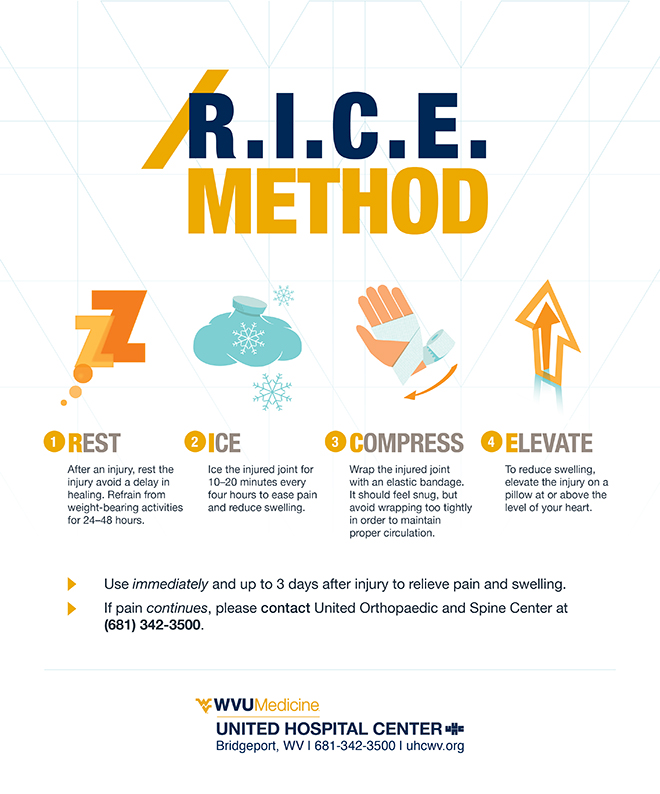An injury can occur at anytime, anywhere. Whether you were injured while exercising or while working outside in the garden, pain and swelling can occur as a result. You may believe that you can work through the pain, but you can actually cause further damage. By following the simple steps of the R.I.C.E. method, you can help the healing process of the injured joint.
Step 1: Rest
After an injury, you need to rest the injured joint to avoid a delay in healing. Doctors typically recommend that a patient refrain from weight-bearing activities for 24 to 48 hours.
Step 2: Ice
Ice the injured joint for about 10 to 20 minutes every four hours to ease pain and reduce the swelling. An ice pack or a bag of frozen vegetables wrapped in a towel are both useful tactics to use. However, make sure to not ice the injured joint for more than 20 minutes in one sitting.
Step 3: Compression
Reduce swelling and the chance of internal bleeding by wrapping the injured joint with an elastic wrap bandage. The bandage needs to be snug, but avoid wrapping it too tightly in order to properly circulate the joint. Signs that the bandage is improperly wrapped include increased pain, swelling, a numb or tingling feeling, and coolness. If you believe that you will need to bandage the injured joint for more than 48 to 72 hours, medical attention may be necessary.
Step 4: Elevation
While resting, icing, and compressing the injured joint, elevate the joint on pillows. To reduce swelling, keep the joint at or above the level of your heart.

When to Contact UHC
You should follow the R.I.C.E. method immediately following and up to three days after your injury. Nonsteroidal anti-inflammatory medications like Ibuprofen or Naproxen can help to reduce pain and swelling, but be aware of the label instructions.
After the pain and swelling of the injured joint dissipate, practice strengthening and stretching exercises to keep the joint flexible.
If pain continues, please contact United Orthopaedic and Spine Center.
This Is Where… Your Joint Pain Stops.
Resource:
http://share.upmc.com/2014/08/rice-method-for-treating-injury/
Resource:
http://www.webmd.com/first-aid/tc/rest-ice-compression-and-elevation-rice-topic-overview
Please note, the information provided throughout this site is not intended or implied to be a substitute for professional medical advice, diagnosis or treatment. All content, including text, graphics, images, and video, on or available through this website is for general information purposes only. If you are experiencing related symptoms, please visit your doctor or call 9-1-1 in an emergency.

